Jasmine Sambac is a magnificent evergreen plant with a heady aroma, to which the bush owes its name - "fragrant jasmine." The representative of the tropics also has an attractive appearance that will harmoniously complement any apartment interior.
Material Content:
Jasmine Sambac - a description of the types of plants
Climbing or climbing shrub, also known as Arab jasmine, is represented by thin shoots covered with petiolate, oppositely arranged egg-shaped leaf blades. During the flowering period in the second half of spring and summer, double or semi-double flowers in the form of an elongated tube bloom.

Jasmine Sambac has several subspecies that are popular among gardeners:
- "Beauty of India" is the result of the work of Indian breeders, which is a fast-growing shrubs or vines with flowers of the correct form, which can decorate the plant throughout the year.
- “Arabian Knights” is a shrub characterized by rapid growth and flowering period, falling in April-October.
- "Indiana" - the variety is able to please with flowers all year round, but subject to the maintenance of rather high air temperatures.
- “Mali Chat” - bushes are characterized by slow growth and greater exactingness to fulfill certain agrotechnical requirements for cultivation.
- "Orleans maiden" - a variety distinguished by flowering, in which the flowers are in full bloom for only a day, and then fall off.
Features of growing Jasminum sambac

In order for the plant to be healthy and bloom profusely for a long time, a number of agrotechnical requirements must be taken into account:
- continuous lighting;
- high temperatures;
- systematic watering;
- fertilizing with fertilizers, including macro- and microelements.
Home Care
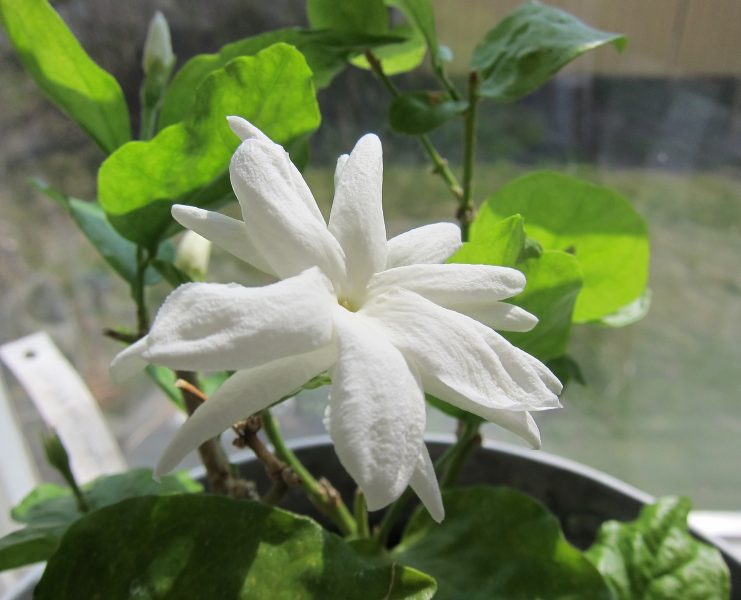
In order for the plant to please fragrant flowers and maintain decorativeness for a long time, competent care for jasmine should be organized:
- Lighting - a culture of long daylight hours is placed near windows with lots of soft light. In winter, with a shortage of natural light, an artificial light source is installed in the form of a phytolamp.
- The soil - the plant develops well in a fertile, friable substrate with a neutral or slightly acidic reaction. To prepare the soil mixture, it is necessary to mix in equal proportions the turf and leaf soil, peat, sand.
- Temperature - the optimal temperature indicators for the summer season are 25-30 ° C, and for the winter season –16-20 ° C.
- Humidity - the representative of tropical zones needs an increased level of humidity, which is provided when installing a humidifier or placing water containers near the shrub.
- Watering - Jasmine Sambac is required to be regularly watered with settled water at room temperature. Before the next portion of water, the top layer of the substrate should dry.
- Top dressing - so that the plant blooms profusely, it is necessary to enrich the soil with nutrients every month using liquid mineral fertilizers, which include nitrogen, phosphorus and potassium.
- Pruning - every spring, jasmine is subject to pruning, in which weak and diseased shoots are completely removed, and all others are shortened by ⅔. After the first flowering, pinching of the stems is carried out, stimulating the development of new shoots with flower buds.
Jasmine Sambac Flowering Period
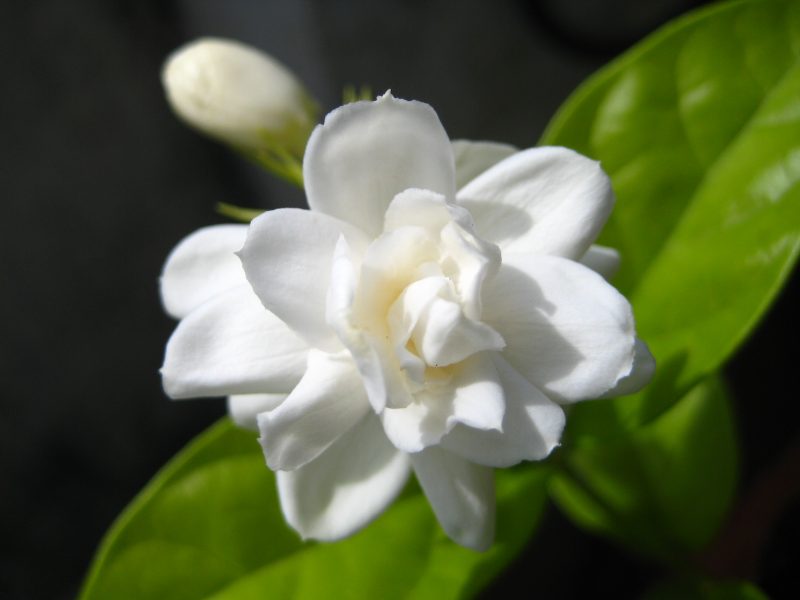
Indoor flower is in demand among flower growers due to the long flowering period, which, depending on the variety, can be observed from mid-spring to mid-autumn, and sometimes in winter. Jasmine blooms profusely, exuding a wonderful aroma. With good care, it can bloom all year.
How to propagate a houseplant
Usually, indoor jasmine Sambac propagates with the help of apical cuttings, which are cut in the spring from lignified, non-flowering branches, and in the summer from young, green shoots. For planting material with 3 internodes, a substrate of peat and sand is prepared. Cuttings are buried in the soil by 2 cm, after which they are covered with bottles to create greenhouse conditions. When new specimens take root, they are planted in individual pots, where they are located until the root system braids the entire earthen lump.
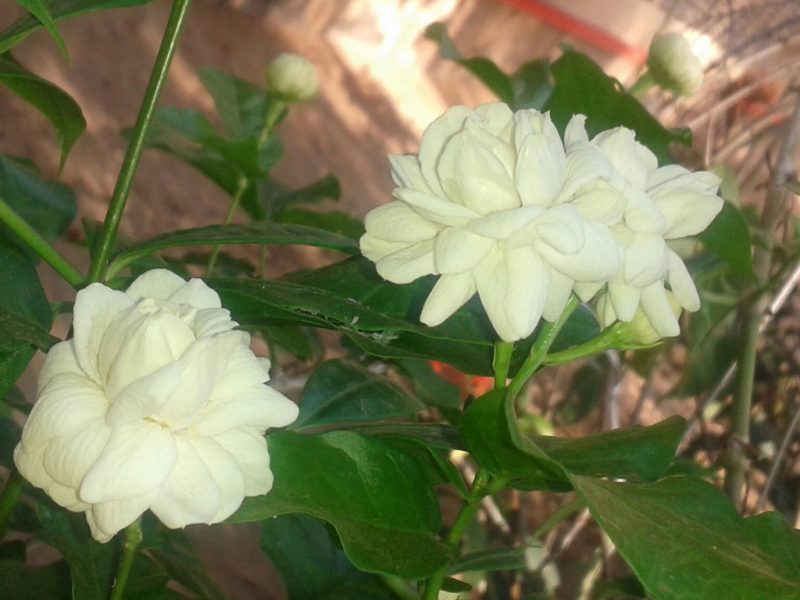
When propagating by layering, the standard technique is used: an incision is made on the selected shoot, which is wrapped with moss, and after the appearance of aerial roots, the layering is separated from the parent.
Read also:jasmine shrub
Protection against diseases and pests
Jasmine Sambac is attacked by pests such as spider mites, thrips, aphids and scale insects. To minimize the risk of populating the culture with dangerous insects, it is recommended to maintain a sufficiently high level of humidity and periodically organize a warm shower in the bush.
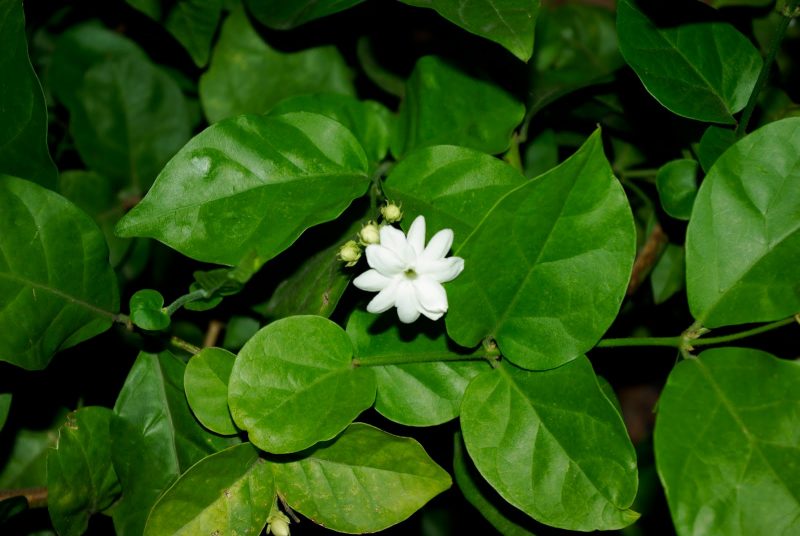
Among the diseases, chlorosis is distinguished, which develops due to a lack of iron and magnesium in the soil, which are introduced by fertilizing with micronutrient fertilizers, and rot caused by excessive watering over a long time interval.
Problems When Growing Sambac Jasmine
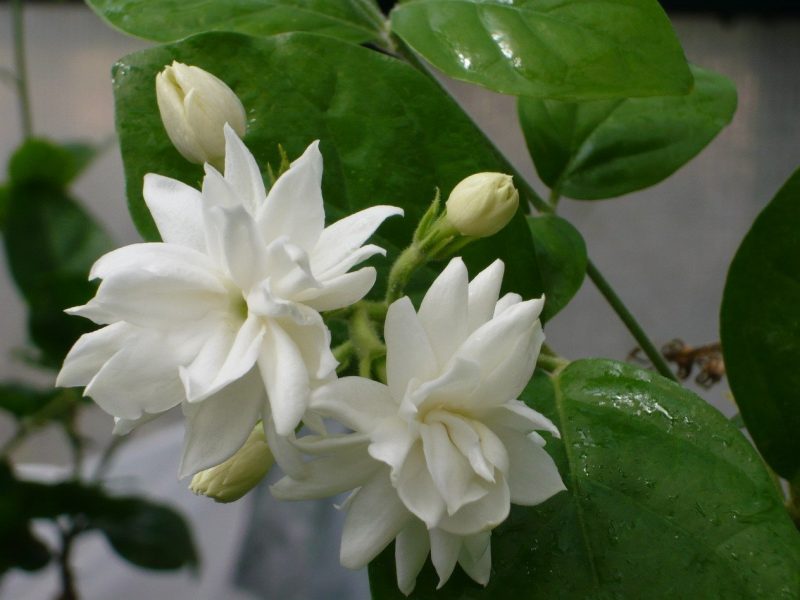
Growing jasmine at room conditions, the grower may encounter the following difficulties:
- Yellowing of foliage - the problem arises due to the appearance of sucking pests, systematic overflow, or as a result of excess fertilizer in the substrate.
- Drying of the tips of the leaves - the causes of the problem situation can be excessive heat and dry air.
- Lack of flowers - if the plant does not bloom throughout the year, it is necessary to review the conditions of detention and all ongoing care measures.
- The discharge of buds is noted with an excess or deficit of soil moisture.
Thus, it is not difficult to grow abundantly blooming and fragrant jasmine Sambac in an apartment environment if you create all the necessary conditions for an exotic bush.












